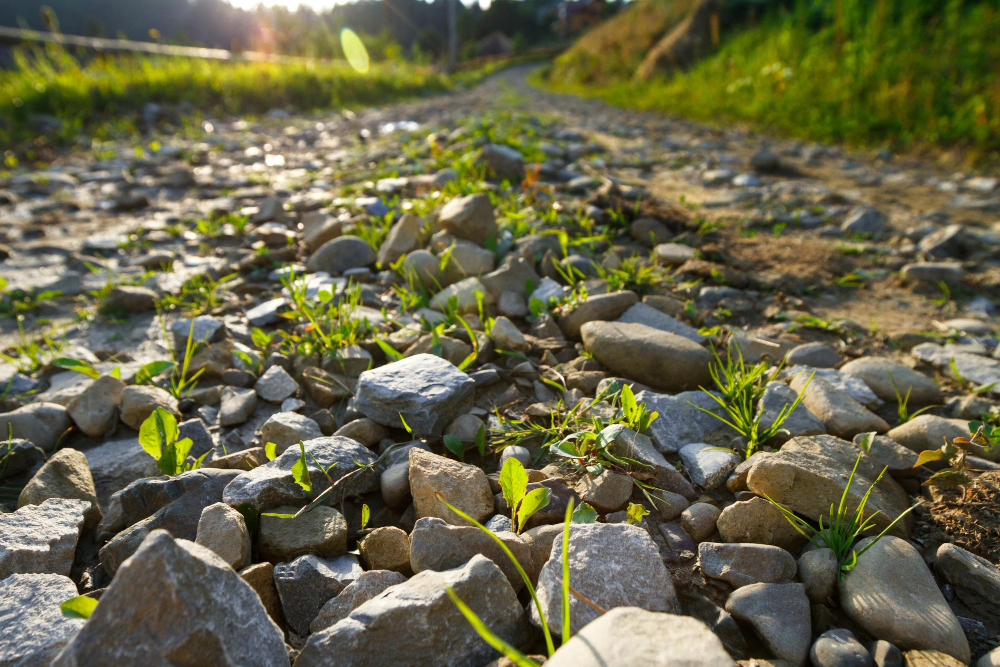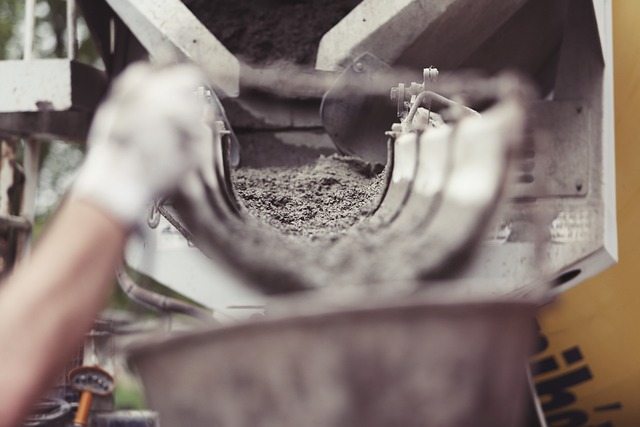River rock for landscaping comes when transforming your outdoor space into a serene, natural oasis, few materials are as versatile and visually appealing as river rock. These smooth, rounded stones, available in various sizes and colors, can be used in numerous ways to enhance your landscape. In this article, we will explore different techniques for using river rock in your landscaping projects, offering tips and inspiration to help you create a beautiful and low-maintenance outdoor space.
Techniques for Using River Rock for Landscaping
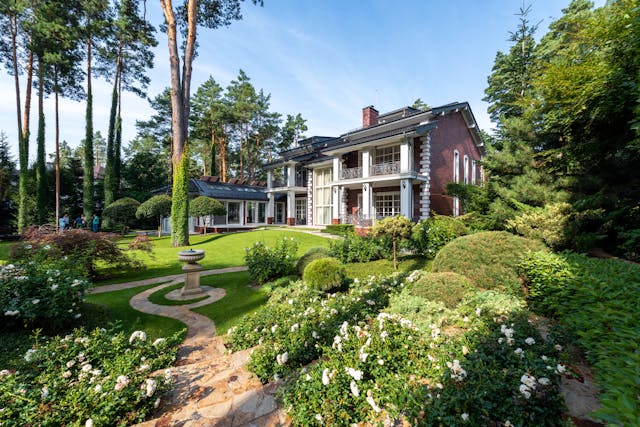
Creating Dry Riverbeds
Dry riverbeds are a popular landscaping feature that mimics the appearance of a natural stream. To create a dry riverbed, follow these steps:
-
- Plan Your Design: Sketch the desired path of your riverbed, considering the natural flow of water and the layout of your garden.
- Prepare the Area: Remove grass and weeds from the chosen path, then dig a shallow trench.
- Install a Liner: Lay down landscape fabric to prevent weed growth and soil erosion.
- Place Larger Rocks: Begin with larger river rocks to outline the edges and create a natural look. Use big size river rock for landscaping for riverbed pathways.
- Fill with Smaller Rocks: Gradually fill in the trench with smaller river rocks, arranging them to mimic the flow of water.
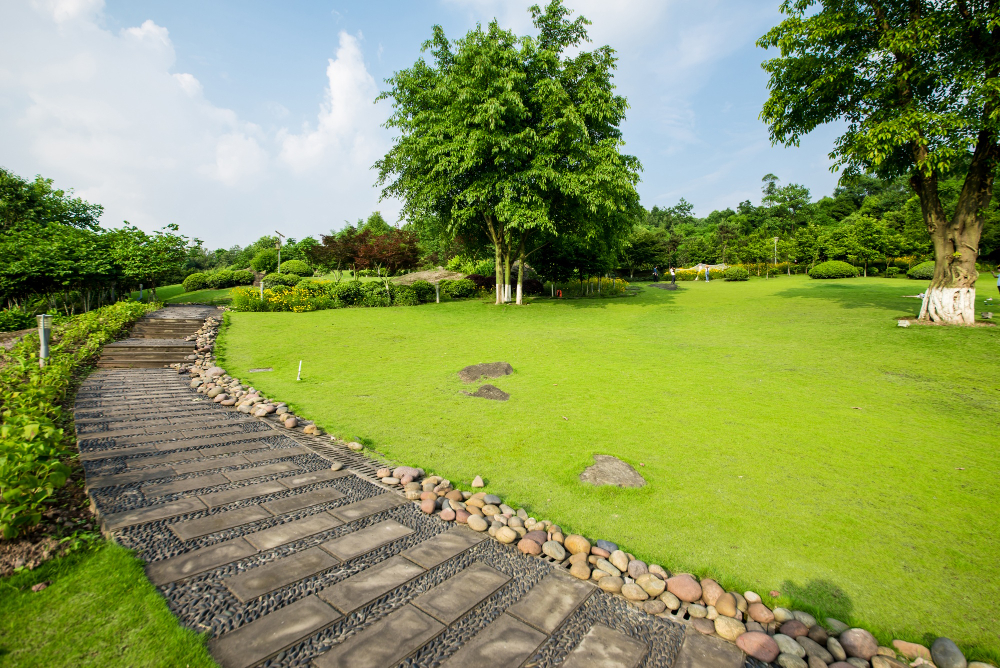
Accent Borders and Edging
River rock for landscaping is perfect for defining garden beds, pathways, and other landscape features. Here’s how to use river rock for borders and edging:
-
- Define the Area: Use a garden hose or string to mark the border’s shape.
- Dig a Trench: Create a shallow trench along the marked line, deep enough to hold the rocks in place.
- Lay Landscape Fabric: Place fabric in the trench to prevent weeds.
- Add River Rocks: Fill the trench with river rocks, ensuring they are evenly distributed and secure.
Enhancing Water Features: Incorporating river rock into water features, such as ponds, fountains, and waterfalls, adds a natural touch. To use river rock in water features:
-
- Line the Edges: Arrange larger river rock for landscaping around the perimeter of the water feature to create a natural-looking border.
- Create Depth: Use varying sizes of river rocks to add depth and texture to the water feature.
- Integrate with Plants: Combine river rock with aquatic plants to enhance the natural feel and promote a balanced ecosystem.
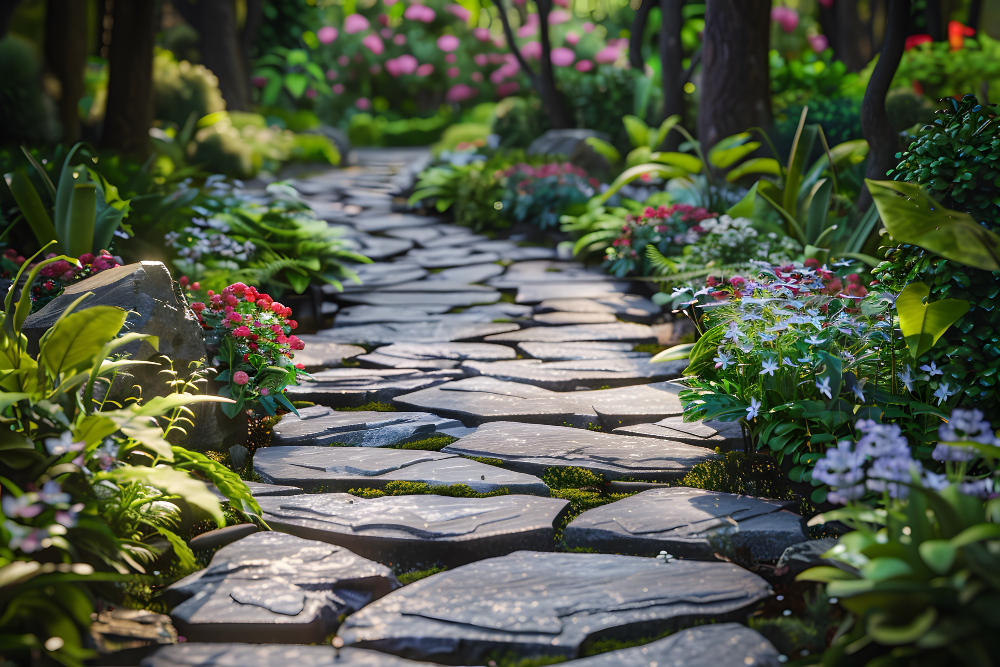
Pathways and Walkways
River rock pathways offer a rustic and inviting look. To create a river rock pathway:
-
- Outline the Path: Use stakes and string to outline the desired path.
- Excavate the Area: Dig out the pathway to a depth of about 4-6 inches.
- Install a Base Layer: Add a layer of crushed stone or gravel to provide stability and drainage.
- Lay Landscape Fabric: Cover the base layer with fabric to prevent weed growth.
- Place River Rocks: Fill the pathway with river rocks, arranging them evenly for a stable walking surface.
Mulching Garden Beds: Using river rock for landscaping as mulch provides a clean and polished look while offering the benefits of traditional mulch. To mulch with river rock:
-
- Prepare the Bed: Remove weeds and level the soil in the garden bed.
- Lay Landscape Fabric: Cover the soil with fabric to prevent weed growth.
- Add River Rocks: Spread a layer of river rocks over the fabric, ensuring complete coverage and even distribution.
Benefits of Using River Rock for Landscaping
After diving into specific techniques, let’s highlight some benefits of using river rock in landscaping:
- Low Maintenance: River rocks require minimal upkeep, making them ideal for busy homeowners.
- Durability: Unlike mulch, river rock does not decompose, meaning it retains its appearance and effectiveness for years.
- Erosion Control: These stones are excellent for preventing soil erosion, particularly on slopes and in areas with heavy rainfall.
- Water Conservation: River rock helps with water retention in the soil and reduces evaporation, promoting healthier plant growth.
- Aesthetic Appeal: The natural look of river rock complements a variety of landscaping styles, from modern to rustic.
How to Select River Rock for Landscaping
Choosing the right river rock for your landscaping project is crucial for achieving the desired look and functionality. Here are some steps and tips to help you select the best river rock for your needs:
1. Determine the Purpose
First, identify the specific purpose of using river rock for landscaping. Different applications may require different sizes and types of rocks. Common uses include:
- Pathways and Walkways: Smaller, smoother rocks provide a stable surface.
- Dry Riverbeds: A mix of larger and smaller rocks creates a natural look.
- Water Features: Larger rocks for edging and smaller ones for filling.
- Garden Beds and Mulch: Smaller rocks for even coverage.
- Borders and Edging: Medium to larger rocks for definition.
2. Consider Rock Size
River rock for landscaping come in various sizes, typically ranging from pea gravel (about 1/8 inch) to larger cobbles (up to 6 inches or more). The size you choose will depend on the project:
- Small Rocks (1/8 to 1/2 inch): Ideal for pathways, garden beds, and mulching.
- Medium Rocks (1/2 to 2 inches): Suitable for dry riverbeds, borders, and larger garden beds.
- Large Rocks (2 to 6 inches or more): Best for water features, accent pieces, and erosion control.
3. Choose the Right Color
River rocks are available in a variety of natural colors, including shades of gray, white, brown, and mixed colors. Consider the overall color scheme of your landscape and choose river rock for landscaping that complement your plants, structures, and other elements. Neutral tones are versatile and blend well with most landscapes, while more vibrant colors can add a striking contrast.
4. Assess Rock Shape and Texture
The shape and texture of river rocks can vary:
- Smooth, Rounded Rocks: Commonly found in natural riverbeds, these are ideal for creating a polished, serene look and are comfortable for walking paths.
- Angular, Crushed Rocks: These offer a more rugged appearance and are excellent for stabilizing slopes and preventing erosion.
5. Calculate Quantity Needed
Accurately calculating the amount of river rock for landscaping needed is essential to avoid shortages or excess:
- Measure the Area: Determine the square footage of the area you plan to cover.
- Decide on Depth: For most projects, a depth of 2-3 inches is sufficient, but this can vary based on application.
- Use a Calculator: Online calculators can help you estimate the amount of river rock required based on area and depth.
6. Source Quality Rocks
Ensure you purchase high-quality river rocks from a reputable supplier. Inspect the rocks for uniformity in size and color, and check for cleanliness. Avoid rocks with excessive dirt or debris, as these can affect the appearance and functionality.
7. Plan for Delivery and Placement
River rocks can be heavy and difficult to move. Plan for delivery and have the necessary tools and equipment ready for placement. This may include wheelbarrows, shovels, and landscape fabric.
8. Consider Environmental Impact
Choosing river rock sourced sustainably and responsibly is important for environmental conservation. Avoid rocks taken from natural riverbeds unless they are harvested legally and ethically.
Final Tips
- Blend Sizes and Colors: Mixing different sizes and colors can create a more natural and visually appealing look.
- Regular Maintenance: While river rocks are low maintenance, occasional cleaning and repositioning may be necessary to maintain their appearance.
- Safety First: Ensure pathways and walking areas are stable and secure to prevent tripping hazards.
By following these steps and considerations, you can select the perfect river rock for your landscaping project, enhancing the beauty and functionality of your outdoor space.
Some examples of specific suppliers and sources for river rock for landscaping:
1. Local Landscape Supply Stores
- SiteOne Landscape Supply: Offers a wide range of landscaping materials, including river rock, with locations across the U.S.
- Ewing Irrigation & Landscape Supply: Provides river rock and other landscaping supplies, with locations nationwide.
2. Quarries and Gravel Pits
- Vulcan Materials Company: One of the largest producers of construction aggregates in the U.S., including river rock.
- Martin Marietta: A leading supplier of aggregates and heavy building materials, including river rock.
3. Online Suppliers
- The Stone Store: Offers a wide selection of river rock and other stones, with online ordering and delivery options.
- Stone Decorative: Provides river rock in various sizes and colors, with options for bulk purchases and home delivery.
- Gravelshop.com: An online marketplace for various types of gravel and stones, including river rock, with delivery options across the U.S.
4. Home Improvement Stores
- Home Depot: Carries a selection of river rock both in-store and online, with delivery and pick-up options.
- Lowe’s: Offers river rock and other landscaping materials, available for online ordering and in-store pick-up.
5. Nurseries and Garden Centers
- Armstrong Garden Centers: Located in California, offers a variety of river rock and other landscaping materials.
- Calloway’s Nursery: Located in Texas, provides river rock and other garden supplies.
6. Stone Yards
- Southwest Boulder & Stone: A stone yard with multiple locations in California, offering a wide variety of river rock.
- Lang Stone: Based in Ohio, provides river rock and other natural stone products.
7. Reclaimed or Recycled Materials Suppliers
- Repurposed Materials: Offers reclaimed and repurposed landscaping materials, including river rock, through their website.
- Green Demolitions: Specializes in salvaged and recycled building materials, including stones and rocks.
8. Local Classifieds and Online Marketplaces
- Craigslist: Search the “materials” section for listings of river rock being sold by individuals or local businesses.
- Facebook Marketplace: Check for local listings of river rock, often available at lower prices from people who have excess materials.
Tips for Choosing the Best Supplier:
- Check Reviews: Look up customer reviews for these suppliers to ensure they have a good reputation for quality and service.
- Visit in Person: If possible, visit local suppliers to inspect the quality of the river rock before purchasing.
- Ask for Samples: Some online suppliers offer samples, so you can see the quality and color of the river rock before making a bulk purchase.
- Consider Delivery Costs: Factor in the cost of delivery when comparing prices between different suppliers.
10 famous landscapes that feature the use of river rock
1. Japanese Zen Gardens
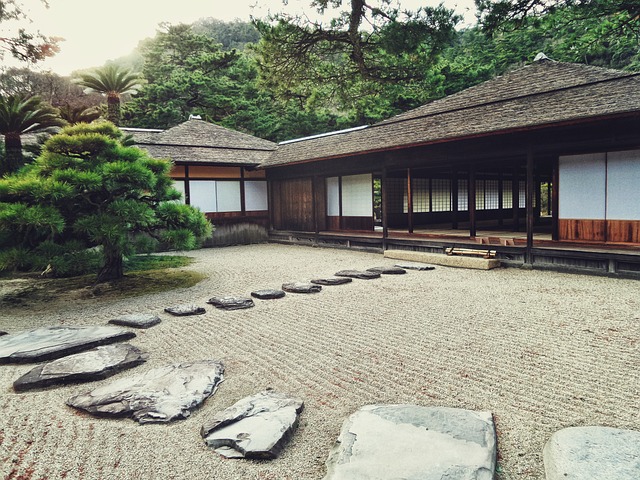
Ryoan-ji Temple Rock Garden, Kyoto, Japan: One of the most famous Zen rock gardens, featuring carefully arranged river rocks and gravel to create a serene, meditative space. The simplicity and elegance of the river rocks play a crucial role in the garden’s aesthetic.
2. Central Park, New York City, USA
The Ramble and Lake: This picturesque area of Central Park includes the use of river rock in the design of the lake’s edges and the naturalistic pathways. The rocks help create a rustic and natural appearance, blending seamlessly with the park’s lush greenery.
3. Butchart Gardens, Victoria, Canada
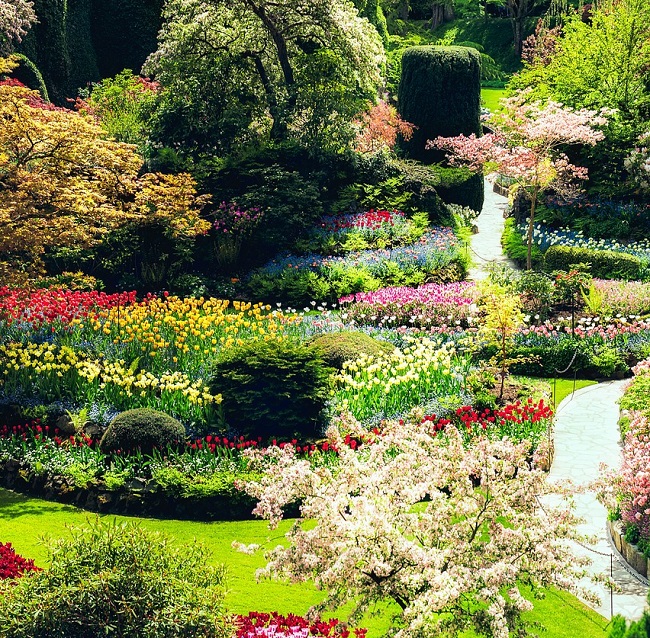
Sunken Garden: The Sunken Garden at Butchart Gardens features river rocks in its pathways and around its water features. The use of river rock enhances the garden’s natural beauty and provides a striking contrast to the colorful flower beds.
4. Portland Japanese Garden, Portland, Oregon, USA
Natural Garden: This garden section utilizes river rocks extensively in its water features, pathways, and borders, creating a tranquil and harmonious environment. The rocks are carefully placed to mimic natural landscapes and complement the surrounding plants.
5. Desert Botanical Garden, Phoenix, Arizona, USA
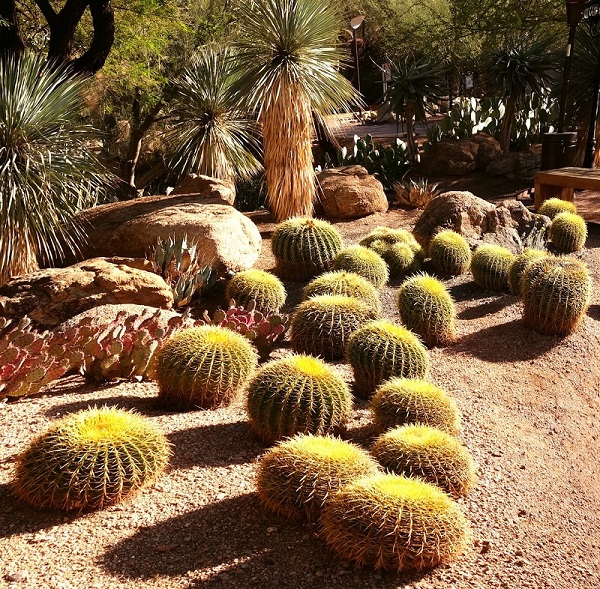
Naturalistic Desert Landscapes: The use of river rock in various parts of the Desert Botanical Garden helps to highlight the arid beauty of desert plants. The rocks are used to create dry riverbeds, pathways, and accent areas, enhancing the natural desert theme.
6. The High Line, New York City, USA
Chelsea Thicket: This elevated park in Manhattan features river rock in its garden beds and pathways. The rocks are used to create a naturalistic feel, blending with the native plants and creating a unique urban oasis.
7. Huntington Botanical Gardens, San Marino, California, USA
Japanese Garden: The Japanese Garden at the Huntington features river rock in its dry riverbeds, around water features, and as decorative elements. The river rock for landscaping help to create a peaceful and contemplative atmosphere.
8. Vancouver’s VanDusen Botanical Garden, British Columbia, Canada
Mediterranean Garden: This section of the VanDusen Botanical Garden uses river rock to create dry stream beds and pathways, enhancing the Mediterranean theme and providing a visually appealing contrast to the surrounding plants.
9. Fairmount Park, Philadelphia, USA
Japanese House and Garden (Shofuso): The garden uses river rocks in its design, including dry riverbeds and around the koi pond. The rocks help to create a traditional Japanese garden aesthetic.
10. Filoli Gardens, Woodside, California, USA
Sunken Garden and Woodland Garden: These areas feature river rocks in pathways, around water features, and as part of the garden’s naturalistic design. The river rock for landscaping contribute to the overall beauty and tranquility of the gardens.
These famous landscapes showcase the versatility and beauty of river rock in various garden styles and settings. Whether used in Zen gardens, urban parks, or botanical gardens, river rock enhances the natural beauty and provides functional benefits such as erosion control and low maintenance.


